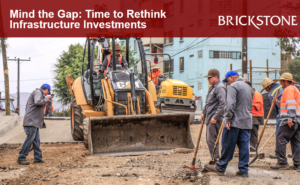Global Trends in Private Investment in Infrastructure
Private Investment in Infrastructure
Infrastructure development is a key driver for progress across nations and at the same time a critical enabler for productivity and sustainable economic growth. It contributes significantly to human productivity and development, poverty reduction, regional competitiveness, and the attainment of national and international goals. Yet, many markets and developing regions lack functioning and productive infrastructure networks mainly due to funding.
According to the Global Infrastructure Hub, the world needs around US$94 trillion in infrastructure investment between 2016 and 2040 to close the global infrastructure gap. This means that, to fully capitalize on the perks of infrastructure development, there’s the need for massive investments in infrastructure, with private investment as a critical financing option.
Although, private investment has largely contributed to global infrastructure development, it is yet to be fully capitalized on to bridge the infrastructure demand and investment gap. According to GitHub, global private investment in infrastructure projects in primary markets in 2021 recovered to 0.3% below its pre-pandemic level (2019), increasing by 4.4% to USD173 billion in 2021. Despite recovering to pre-pandemic levels, private investment in infrastructure projects has been stagnant for eight consecutive years, and far shy of what is needed to close the infrastructure gap.
This article by Brickstone reviews the Global Infrastructure Hub’s report on global trends in private investment in infrastructure, highlighting key facts and takeaways.
Global Trends in Private Investment in Infrastructure
According to GITHub, private investment in infrastructure projects in 2021 grew by 8.3% in high-income countries, while investment in middle- and low-income countries fell by 8.8%.
The gap between private investment in infrastructure projects in high-income countries and that in middle- and low-income countries continues to widen; in 2021, 80% of private investment in infrastructure projects occurred in high-income countries and 20% in middle- and low-income countries.
While the declining trend in infrastructure investment in middle- and low-income countries began before the pandemic, it was exacerbated during the crisis, and investment levels remain significantly lower than those seen in high-income countries.
The renewables sector continues to attract the most investment, garnering almost half of total private investment in infrastructure projects in 2021. Meanwhile, the global trend away from non-renewables continued. Non-renewables now represent only 11% of total private investment in energy projects. Encouragingly, following a trend that emerged during the pandemic in 2020, private investors are showing growing interest in telecommunications and social infrastructure, sectors that have historically attracted very low levels of private investment.
The following are key facts and takeaways from GitHub’s report on global trends in private investment in infrastructure:
Green private investment is at a record high. According to GitHub’s report, Global private investment in infrastructure projects was ‘greener’ than ever in 2021, and at 60% of total private investment in infrastructure projects, a record high. Most of this green investment is in the renewable energy sector. Encouragingly, the trend towards greener investments in infrastructure was seen across high-, middle-, and low-income countries, although the share of green investment remains higher in high-income countries.
The performance of infrastructure equities through recent economic shocks highlights their resilience and stability relative to listed global equities. Infrastructure equities, according to GitHub, have provided increasing returns to private investors for a decade prior to the pandemic. The pandemic temporarily stalled this trend in 2020 but it resumed in 2021. During the first half of 2022, rapid inflation and consequently rising interest rates negatively impacted returns on listed infrastructure equities by -1.9% and on unlisted infrastructure equities by -5.2%. The fall in returns on infrastructure equities is significantly less than the fall in listed global equities returns (-20%) which highlights the resilience and stability of infrastructure equities during economic downturns.
In the last decade, returns on private infrastructure debt increased strongly. This trend temporarily stalled during the pandemic, and global economic shocks negatively impacted returns in the first half of 2022 due to rising interest rates. Despite the decline in infrastructure investment returns, asset class remains attractive for private investors as its inflation-hedging potential is stronger than that of other investment options. Private investors are also still allocating more capital than ever to infrastructure to mitigate inflation risk.
Cumulatively, default rates for infrastructure debt have been consistently lower than for non‐infrastructure debt, and this difference grew during 2020. As the default curve excludes older infrastructure loans, infrastructure debt becomes less risky and performs faster as an investment grade security. Thus, infrastructure debt performance has been continually improving over at least three decades.
The amount of private capital available for infrastructure more than quadrupled from 2010 to 2021. In the last decade, private infrastructure capital raised by funds per annum quadrupled from about USD34 billion in 2010 to USD129 billion in 2021. During the pandemic, the volume of capital raised dropped slightly, but it remained above the 2018 level and recovered to a new record of USD129 billion in 2021. Despite a decline in returns due to rising interest rates during the first half of 2022, the asset class remains attractive for private investors, as it has relatively stronger inflation hedging potential than other investment options.
The greater market value of infrastructure funds’ investments reflects greater availability of capital but also greater dry powder. The current record level of dry powder translates into a greater capacity to deploy capital in the short to medium term as new infrastructure investment opportunities arise, especially in a post-pandemic era with rising interest rates. While dry powder levels are at their highest, in relative terms, dry powder as a percentage of assets under management (AUM) has gradually declined from a high of 43% in 2010 to 30% in 2021, indicating that a higher percentage of AUM has been deployed towards infrastructure investments.
Multilateral development banks (MDBs) continue to play a major role as financiers of private investment in infrastructure, in middle- and low-income countries. Over the past decade, MDBs have increasingly focused on middle- and low-income countries, and in 2021, they were the second-largest type of financier in these countries (behind banks). MDBs have played a critical 17% role in the global transition towards net zero emissions, with significant financing channeled into renewable energy projects. While financing of non-renewables still occurs, it is anticipated that it will decline to achieve global net-zero goals.
Download the full report here.






